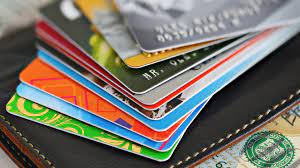… Understanding the Risks and Mitigating Strategies
The growing trend of using payment cards for money laundering has become a cause for concern among regulators and risk professionals. The reasons for accepting payments from ‘perceived’ money launderers can be absurd and comical, but the consequences can be serious. In this article, we will discuss some of the reasons why merchants may accept these payments and how to prevent them from being used for money laundering.
One reason for accepting payments from ‘perceived’ money launderers is that the cardholder may have a limit on their card and cannot use an ATM. They need a point-of-sale (POS) device to pay for an item that requires a bank transfer or cheque, such as a purchase of GH¢50,000. Another reason is that in some African countries government may have placed a limit on how much one can spend from their bank account. To circumvent this system, Money Launderers open multiple accounts and request multiple debit cards, which they can use to cash the funds via POS. In some cases, a customer may possess up to 15 bank debit cards.
It is important to note that payment cards are meant for the purchase of retail items and not intended for high-value transactions such as purchasing a car, house or leasing an apartment. The misuse of payment cards for money laundering not only undermines the financial system but also exposes merchants to significant risks.
Payment card fraud and money laundering are two serious issues that are becoming increasingly common in the world of finance. The use of payment cards for money laundering is a form of financial crime that can cause significant harm to financial institutions, merchants and individual consumers. To prevent these crimes, regulators and risk professionals must be vigilant in detecting and reporting suspicious activity.
One of the most important steps in detecting payment card fraud and money laundering is understanding the behaviour patterns of these crimes. Money launderers often use payment cards to move money from one account to another, and this movement is often done in a very short period of time. To detect this activity, regulators and risk professionals should look for unusual spikes in card usage – especially when the card is being used in a foreign country or for a high-value transaction.
Another key factor in detecting payment card fraud and money laundering is monitoring the types of purchases made with the card. For example, a payment card being used to purchase high-value items like jewellery or luxury goods could be a sign of money laundering. In addition, regulators and risk professionals should look for patterns of behaviour that suggest the card is being used for illegal purposes; such as making multiple transactions in quick succession or using the card in areas with a high rate of criminal activity.
To help prevent payment card fraud and money laundering, it is important that regulators and risk professionals work closely with merchants and financial institutions. For example, merchants can be trained to identify and report suspicious transactions; and financial institutions can be required to implement strict security measures such as encryption, firewalls and other forms of digital protection.
Finally, regulators and risk professionals should also be aware of new technology that is being developed to detect payment card fraud and money laundering. For example, artificial intelligence and machine learning algorithms can be used to analyse patterns of behaviour, identify fraudulent activity, and make predictions about potential money laundering activity.
In conclusion, detecting payment card fraud and money laundering requires a multi-pronged approach that involves collaboration between regulators, risk professionals, merchants and financial institutions. By using a combination of monitoring and detection techniques, combined with new technology and enhanced security measures, regulators and risk professionals can help prevent these crimes from becoming a major threat to the financial system.
The author is a chartered accountant and a risk and compliance professional.
You can contact him via [email protected]









![“It’s hard to say goodbye” – Christian Atsu’s wife composes emotional tribute song for him [Video]](https://ghananewss.com/storage/2023/05/Christian-atsu-and-wife-100x75.jpeg)








